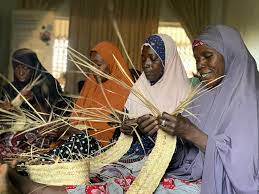
Packaging fulfils the diverse role of protecting products, preventing spoilage, contamination, extending shelf life, ensuring safe storage thereby helping to make them readily available to consumers.
Nigeria is one of the largest producers of commodities like food grains, sugar, fruits, vegetables and tea. Due to varied crop pattern, localized production of commodities, safe and hygienic storage, transportation and distribution and protection against wastage, hence packaging is of utmost importance.
Woven sacks are manufactured with polyethylene or polypropylene materials and can be laminated or unlamented. These sacks are among the most versatile packaging solutions widely used in the packaging of fertilizers, building materials, food grains, chemicals, cattle feedstock and grocery products, among others. Woven sacks exhibit high strength and low seepage and are lightweight, moisture proof and durable.
They are an economical solution as compared to their counterparts such as big bags & sacks, containers and other such products. The factor that makes woven sacks favorable among end users is recyclability. They can be used multiple times without any wear and tear.
Woven sacks find application in the retail sector, owing to the growth of supermarkets, hypermarkets and convenience stores, where bulk products are in use and require easy storage and transportation. Overall, the outlook for the woven sacks market is expected to be positive during the next decade.
The woven sacks market is expected to witness huge demand from agriculture and building & construction industries. The preferred materials for the manufacturing of woven sacks are polypropylene and polyethylene; however, due to the non-toxic characteristics of polypropylene, it is the preferred choice among the two.
Woven sacks are used in various industries including agriculture, horticulture, construction and other sectors as these sacks are quicker to pack and deliver. These factors are expected to drive the global woven sacks market.
Laminated woven sacks consist of piles of fabrics that have polypropylene or polyethylene strips. Here woven sacks are laminated by a ply of plastic film or paper, which provides superior printability to the sacks. This factor is expected to drive the growth of the global woven sacks market during the next decade.
Woven sacks are non-toxic and can be reused, and are available in a wide range of capacities, owing to the demand from various end-use industries.
Also, woven sacks comply with rising regulations and standards against the use of single-use plastic bags & sacks. These factors are expected to fuel the demand for woven sacks.
The global market for polypropylene woven bags and sacks market was valued at US$ 3,421.5 million in 2017. The market is expected to expand at a compound annual growth rate (CAGR) of four point two percent (4.2%) over the forecast period, 2018-2028.
Polypropylene woven bags and sacks are 100% reusable and non-toxic. Polypropylene woven bags and sacks find applications in various end use industries.
Agriculture product packaging, food packaging, geotechnical packaging, tourism and transport, daily necessities, flood control products are some of the prominent applications of polypropylene woven bags and sacks.
The demand for polypropylene bags and sacks from the cement industry has increased significantly in the last few years, due to increase in urbanization and growth in the industrial sector.
Steady increase in the cement industry will increase the demand for its packaging, and in turn, polypropylene woven bags and sacks. Polypropylene woven bags & sacks offer optimum strength and good material handling during transportation and shipping. They are highly preferred for cement packaging.
In recent years, it has been noticed that the number of polypropylene woven bags & sacks manufacturers for industrial applications has increased dramatically.
On the basis of material type, the global woven sacks market has been segmented as:
Polypropylene
Polyethylene
On the basis of product type, the global woven sacks market has been segmented as:
Open Mouth Sack
Pinch Bottom Sack
Gusseted Sacks
Valve Sacks
Others
On the basis of sack type, the global woven sacks market has been segmented as:
Laminated
- Paper
- BOPP (Biaxially Oriented Polypropylene)
Unlamented
On the basis of capacity, the global woven sacks market has been segmented as:
Less than 20 kg
20 – 40 kg
40 kg & above
On the basis of end use, the global woven sacks market has been segmented as:
Food & Beverages
Agriculture
Building & Construction
Chemicals & Fertilizers
Retail
Others
The market for polypropylene (PP) woven sacks in Nigeria is national. With a population of over two hundred million (200,000,000) people and an estimated national population growth rate of five point seven percent (5.7%) per annum, Nigeria has a large market for polypropylene (PP) woven sack.
Polypropylene (PP) sacks have an edge over the conventional jute sacks in the sense that the former is light in weight, strong and attractive.
These sacks are immune to the effect of corrosion, decay, moisture, atmosphere, rats, rodents, moths and insects. Being superior in quality and economic as compared to the traditional jute material, these modern sacks have gradually captured a large market for packing fertilizers, chemicals, food stuffs, animal foods, oil cakes etc.
Nigeria’s packaging industry has seen significant growth, recording about forty percent (40%) expansion in the last five years.






















